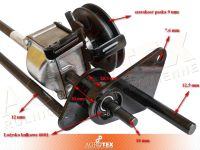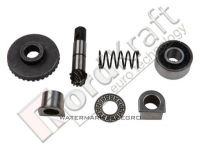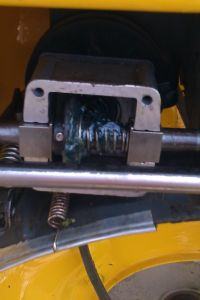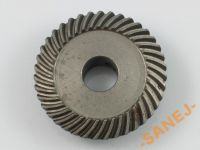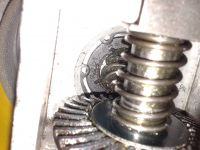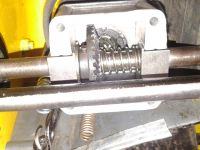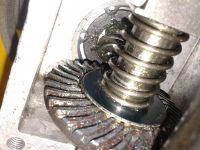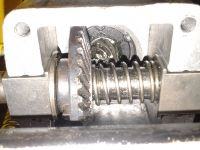Maybe it will be useful to someone.
I would like to describe here my struggle with the drive of lawn mower. The above colleagues' entries regarding problems with the drive differential are so precise that nothing more can be added, which is why I will focus on driving the drive directly from the axle to the mower's wheels, because as I will show further - this can be quite a problem. I inherited the combustion mower (the name of the company-engine B & S 625 series with a drive). They gave it to me because the drive did not work, and the owner had enough pushing not a lightweight mower. Mower was on the site and supposedly - it was impossible to repair, so the service technician suggested disconnecting the drive so that you can push the mower, to which the previous owner reluctantly but agreed. It turned out that he simply unclipped the pin from the left half-axle right next to the small sprocket and after the competition. I decided to get to this mechanism. Mechanism of transmission seemed to me simple, after pulling the drive cables, half-axles - at the end of which the bolts are inserted laterally (no wedges), they hook on special notches in small toothed wheels, and those in turn meshed with a large wheel from the mower, cause the mower going. Unfortunately, the service technician did not give the bolt-by disassembling the drive, so I had to undo the right wheel to view this miracle. I took the dimensions and cut the same bolt (taking its oval shape at the ends), and to my surprise, the effect was miserable - the wheels alternately tried to propel the mower - the word "tried" is still overgrown, just mower barely beat 1 m. On YT I found only one movie about such problems with mowers and so it turned out that there my friend showed drive for wedges and I am a cross pin, so I came to experiment on a living organism, although in principle the operation is similar. After cutting the next pins (different dimensions) - I would like to point out that without machining their ends, it suddenly turned out that the drive came to life. After a thorough analysis, I came to the conclusion that this surviving pin (original from the right wheel) was simply "machined at the ends" by a harder gear - and by the nature it slid on the gears without moving the drive from the axle each time, thus its original shape it should be straight cut at the ends. then it tightly engages with the small wheel - moving the wheel drive perfectly. The two bolts so made - (I will add a diameter of 5 mm, necessarily !!! and the length of the experimentally chosen in my case is = 2.2 cm) already a year work in the drive without a lot of problems. To lubricate this connection, I did not use solid lubricant but a silicone spray lubricant, I greet all DIY enthusiasts.
